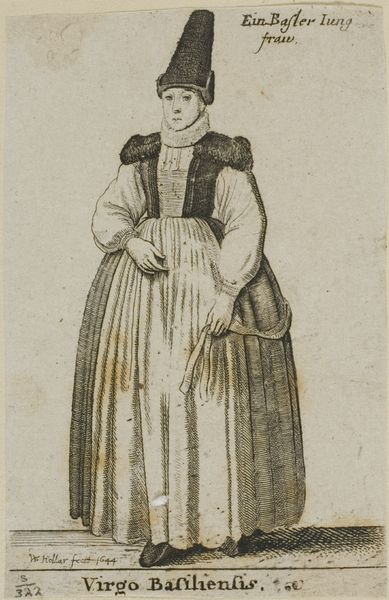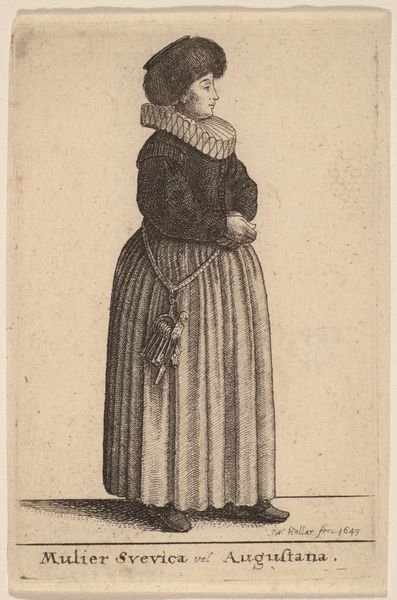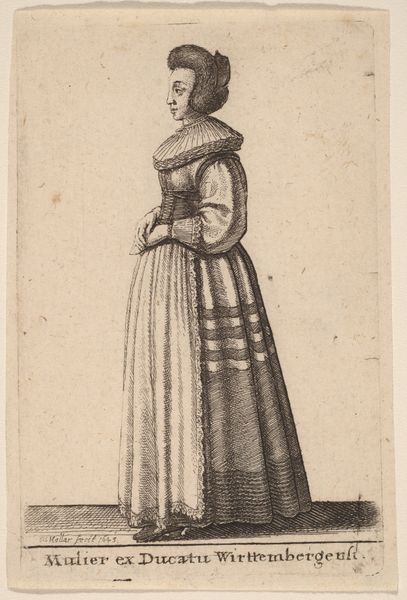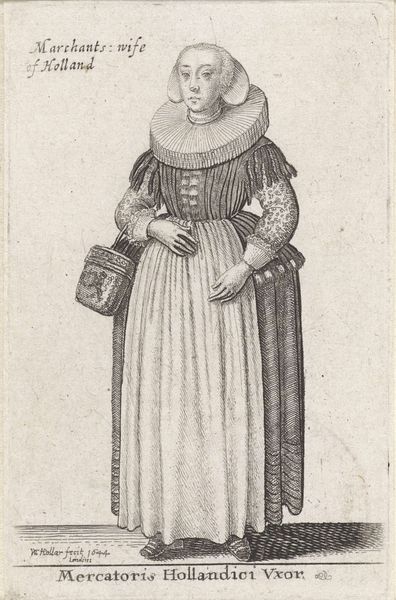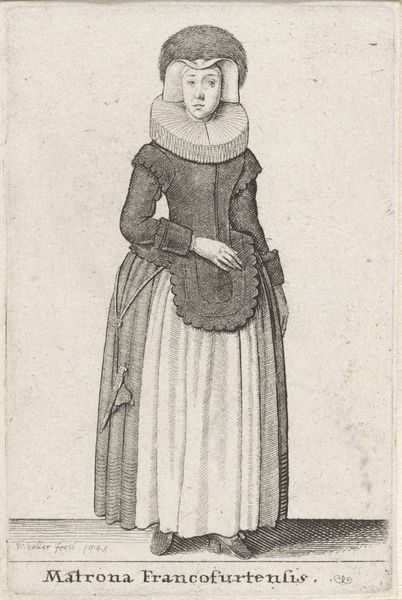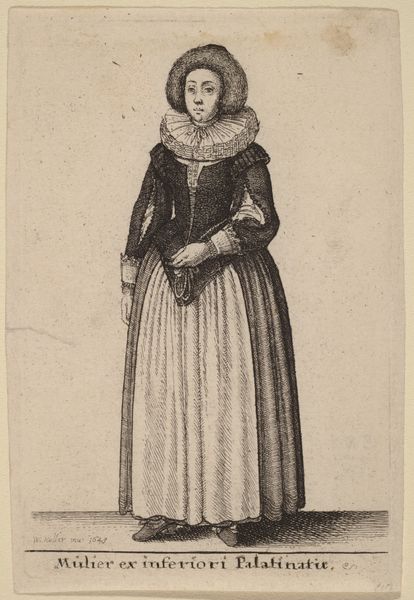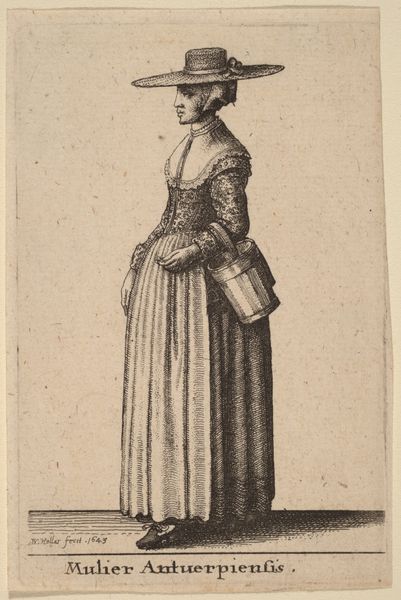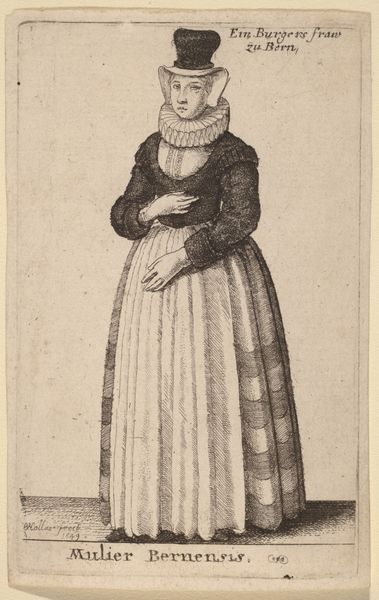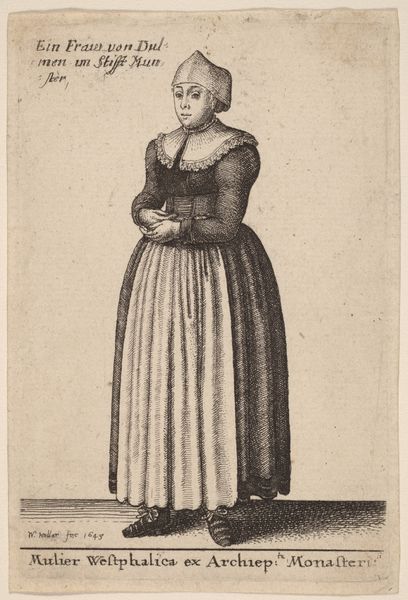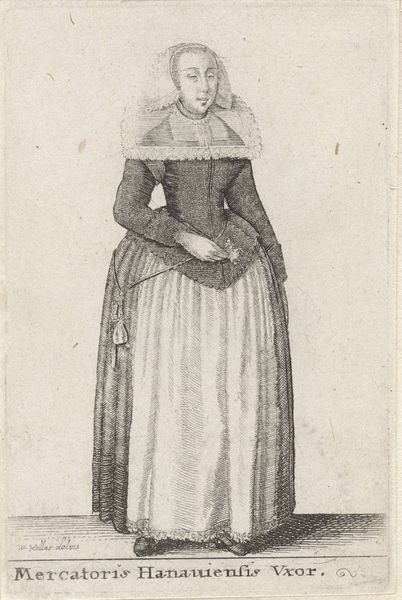
print, engraving
#
portrait
#
baroque
# print
#
figuration
#
genre-painting
#
engraving
Copyright: National Gallery of Art: CC0 1.0
Editor: Here we have Wenceslaus Hollar’s "Virgo Basiliensis," an engraving from 1644. There’s something quite captivating about her, almost haunting in her stillness. What stands out to you when you look at this image? Curator: The layering of identity, quite literally in the young woman’s garments, captures my attention. Notice how Hollar meticulously renders each article of clothing, providing cultural markers of status and origin. What stories do you think the "Basler Jungfrau" carries in her dress? Editor: I see… It speaks to a specific time and place, doesn’t it? Her distinctive headwear, that tall hat, and the style of her dress – it's a strong visual statement. How would this have resonated with viewers in the 17th century? Curator: Indeed. Clothing often operates as a powerful signifier of identity. Hollar, through precise detail, is recording and preserving an image of cultural distinctiveness for posterity. This "portrait" operates less as an individual likeness and more as a symbol – what elements do you think contribute to this symbolic reading? Editor: Maybe it's the slight stiffness of her pose, a certain formality in the presentation? I suppose I'm struck by how this engraving freezes a particular moment in time, documenting a specific cultural type. I hadn't fully considered the deliberate construction of such images. Curator: Exactly! It reminds us how images actively shape cultural memory, embedding visual cues that future generations inherit and interpret. The emotional weight of such garments shift as time goes by. Editor: I’ll definitely consider the symbolic nature of dress more closely from now on, and its historical and cultural implications. Thank you!
Comments
No comments
Be the first to comment and join the conversation on the ultimate creative platform.

